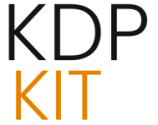ACX vs. Findaway Voices: Which Audiobook Distribution Platform is Right for Your Book?

The audiobook market is booming, transforming passive readers into active listeners. For authors and producers looking to bring their content to listeners, two major distribution gatekeepers stand ready: ACX (Audiobook Creation Exchange) and Findaway Voices. Choosing between them is one of the most significant strategic decisions in audiobook publishing.
While both platforms facilitate the journey from manuscript to listening apps, they operate under fundamentally different business models—one prioritizing depth within a single dominant ecosystem, the other prioritizing breadth across the entire digital shelf.
Understanding the Players
1. ACX (Audiobook Creation Exchange)
ACX is Amazon’s proprietary platform for creating and distributing audiobooks. If you want your book on Audible (the world’s largest audiobook retailer), ACX is the primary, most direct route.
The ACX Model: Deep Focus on Audible
ACX functions as a specialized marketplace connecting rights holders (authors/publishers) with narrators, or allowing rights holders to upload their own finished audio files for distribution.. Find out more about ACX vs Findaway Voices audiobook distribution comparison.
- Distribution Scope: Exclusive to Amazon/Audible/iTunes.
- Primary Goal: Dominating the Audible ecosystem.
- Payment Structure: Offers higher royalty rates in exchange for exclusivity within the Amazon ecosystem.
2. Findaway Voices (Now part of Spotify)
Findaway Voices revolutionized the industry by acting as a powerful aggregator. Instead of choosing one retailer, authors upload their finished audiobook once, and Findaway distributes it everywhere else.
The Findaway Model: Maximum Market Reach. Find out more about Maximizing audiobook royalties ACX versus wide distribution guide.
Findaway ensures your audiobook lands on Apple Books, Google Play, Kobo, Scribd, libraries (via OverDrive/Libby), and numerous other platforms worldwide—offering true multi-vendor distribution.
- Distribution Scope: Wide distribution across nearly all major digital retailers and library systems globally.
- Primary Goal: Maximizing visibility and accessibility outside of the Amazon walled garden.
- Payment Structure: Offers standard industry rates across multiple vendors, resulting in a lower overall percentage cut from Audible specifically, but capturing revenue from markets Amazon doesn’t dominate.
Head-to-Head Comparison: Key Decision Factors
The choice between ACX and Findaway Voices hinges on three critical factors: Exclusivity, Royalty Rates, and Reach.. Find out more about Findaway Voices distribution to Audible and library systems tips.
1. Exclusivity Requirements
This is the most crucial differentiator. Audiobook rights are generally treated like music or video rights: you can typically only sell them exclusively to one place, or widely to many.
- ACX: To earn the top royalty tier (40%), you must agree to exclusivity on Audible/Amazon for 7 years. If you choose the non-exclusive route on ACX, your royalty drops significantly (to 25%).
- Findaway Voices: Findaway actively prohibits you from distributing the title exclusively elsewhere. However, because Findaway is an aggregator, they will distribute your title to Audible/Amazon as well. The critical difference is that when Findaway distributes to Audible, they handle the distribution fee, which affects the author’s ultimate net earnings from that specific store compared to direct ACX handling.
2. Royalty Structure and Earnings Potential
How much money you keep per sale varies dramatically based on the exclusivity agreement.
Factor ACX (Exclusive Option) Findaway Voices (Wide Distribution) Audible Royalty Rate 40% of the sale price Typically lower, as Findaway takes a distribution cut before paying the author (often yielding 20-25% net from Audible sales). Non-Amazon Sales N/A (Cannot sell elsewhere) Retains a higher percentage of sales from Apple, Kobo, Google, etc., than they would earn if those sales were routed through Amazon’s system. Upfront Payment Option Available via Pay-for-Production (PFP) deals with narrators, where rights revert to the author after 7 years. No direct PFP or upfront payments offered by the distribution platform itself.
3. Market Reach and Accessibility. Find out more about ACX seven year exclusivity contract terms for authors strategies.
If your audience primarily listens on Audible, ACX is the fast lane. If you want to capture listeners who refuse to use Amazon or those who prefer library lending via Libby, Findaway is necessary.
- ACX Strength: Market Share. Audible accounts for the vast majority of audiobook sales in the US market. Being direct on ACX ensures you are seamlessly listed where most buyers shop.
- Findaway Strength: Global and Niche Markets. Findaway is essential for penetrating international markets (like German or French retailers), selling directly to libraries, or being present on Spotify Audiobooks, which is an increasingly important frontier.
The Strategic Decision: Who Should Use Which Platform?
The ideal choice depends entirely on your goals, market knowledge, and tolerance for contractual limitations.
Choose ACX If… (The Deep Dive Strategy). Find out more about ACX vs Findaway Voices audiobook distribution comparison overview.
- You are confident Audible drives 90%+ of your sales. If you are certain your audience lives on Audible, maximizing that specific royalty rate (40%) is paramount.
- You seek simplicity. Managing one distribution channel (Amazon) is easier than tracking earnings across ten retailers.
- You are willing to commit long-term. You must be comfortable signing away exclusivity for seven years to secure the highest rate.
- You have a new title where establishing an Audible presence quickly is the priority.
Choose Findaway Voices If… (The Wide Distribution Strategy)
- You refuse exclusivity. This is non-negotiable for authors who need to test different markets or who have rights bundled elsewhere.. Find out more about Maximizing audiobook royalties ACX versus wide distribution definition guide.
- You are focusing on international sales. Findaway has superior backend integration with many non-US specific retailers.
- Your audience uses subscription or library services. Findaway is the standard path for Ingram’s library distribution channels and services like Scribd.
- You have backlist titles. If a book already sold out its exclusivity window on ACX, Findaway is the best way to redeploy it widely for ongoing passive income.
A Note on Hybrid Strategies
For authors who publish across multiple genres or wish to test the waters, a hybrid approach is often recommended:
- First Run (Exclusivity): Launch your newest, highest-priority title exclusively on ACX for the first 7 years to capture the maximum Audible royalty (40%).
- Post-Exclusivity Redeployment: Once the 7-year exclusivity window closes, immediately pull the title from ACX and move it to Findaway Voices. This ensures the title can now be sold widely across Apple, Kobo, etc., while still remaining on Audible via the Findaway feed (albeit at a lower royalty rate).
Conclusion: It’s About Market Control vs. Market Saturation
ACX and Findaway Voices are not competitors in the sense of being mutually exclusive choices for every book; rather, they represent two different philosophies of market capture.
ACX offers a high-yield, exclusive path into the world’s dominant audiobook storefront. It demands loyalty in exchange for a larger cut of that specific pie.
Findaway Voices offers ubiquitous access across the entire digital landscape. It provides lower margins on individual sales but ensures you never miss a potential customer, regardless of which platform they choose to frequent.
The modern, savvy author or producer must weigh their revenue goals against their desire for market saturation, using the platform that best aligns with their long-term publishing strategy.




